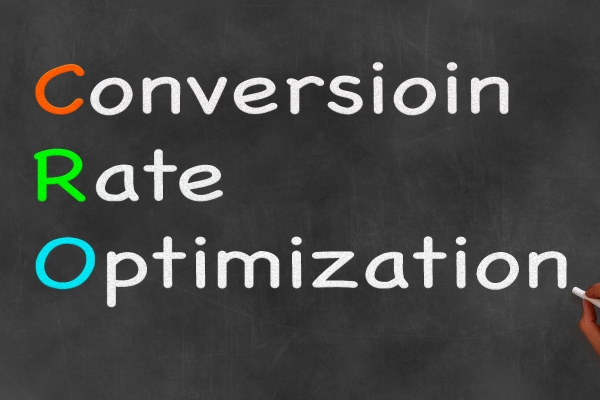Conversion Rate Optimization (CRO) : Top 10 best practices
Is your conversion rate leaving you puzzled? Wondering how to boost it without having to spend a fortune? You are far from being alone in this! Online, the key to success often lies in the details, and the conversion rate is a big one.
That’s why optimizing it is crucial to increase your revenue. Are you wondering how to do it? You’re in luck! Debugbar has created this handy guide to share the best practices to help you optimize your conversion rate and turn your leads into loyal customers.
Let’s get started!
Conversion Rate: Let’s simplify it
In digital marketing, the conversion rate is your site visitors’ percentage who follow through with a specific call-to-action (CTA) – whether it’s:
- Filling out a form,
- Signing up for a service,
- Or making a purchase.
It’s that simple! A high conversion rate signals that your website design and content resonate with your audience which is every marketer’s dream.

What makes a good CRO and how do we measure it?
Now, one might ask “what is a good conversion rate”? Just like the secret sauce in your grandma’s recipes, the ideal conversion rate isn’t one-size-fits-all. It varies based on factors such as:
- Industry;
- Niche;
- Goals;
- Traffic channel;
- Audience demographics;
For example, US e-commerce websites boasted a conversion rate under 3 % in 2022, while their British counterparts saw rates around 4%.
So, if your rate is lower than your main competitors’, you know it’s time for some optimization. Wondering how to get that percentage? It’s as easy as pie.
Just divide the number of conversions by the number of visitors and multiply by 100. So, if your website gets 500 visitors in a week and you make 10 sales, your conversion rate would be:
- (10/500)*100 = 2%.
Top 10 best practices for boosting your conversion rate
Ready to take your CRO to the next level? Here are the top 10 best practices that successful marketers swear by, and now you can too!
1. Set clear goals: Aim for the stars
The clarity of your goals can significantly impact your chances of success. A study unveiled that setting clear objectives boosts your probability of achieving them.
And we are not just talking about vague goals like “attracting more traffic.” Adopt a SMART (Specific, Measurable, Achievable, Relevant, Time-bound) methodology for a comprehensive and actionable path to success.
For instance, go for specific traffic growth targets accompanied by defined strategies and deadlines. Align these with short term (over the next six months to a year) and long-term objectives according to your business requirements.
Whether it’s boosting long-term sales or increasing sign-ups, draft a SMART plan to achieve it.
All the objectives and assumptions regarding an experiment need to be anchored in quantitative and qualitative research data.
Avoid making assumptions about apparent improvements or common sense changes while conducting experiments. A well-defined hypothesis is paramount for understanding:
- What you’re testing,
- Why you’re testing it,
- And how you should interpret the results.
2. Understand your audience to build a strong customer relationship: One size does not fit all
Understanding your user and forming a market strategy is a pivotal step in boosting your conversion rates.
Here are a few actionable tips:
- Pay close attention to what your market truly wants and tailor your offers accordingly.
- Offer something of value in exchange for conversions. This could range from high-quality content to special discounts or offers.
- Carve out time to study your site visitors’ interests, requirements, demographics, and behavior patterns. This will help you create user-centric strategies that hit the mark every time.
- Carry out structured conversations with prospects, customers, and even lost customers. Their insights could prove invaluable in shaping your CRO strategy.
- Avoid reliance on analytics alone – it’s essential to connect with real people, too. This could be done through surveys or social media engagement.
Analyzing visitor behavior is the final step in understanding your user. Opt for this approach:
- Use visitor behavior analysis tools such as heatmaps, session recordings, and click maps.
- Launch entry and exit surveys on landing pages to understand visitor psychology.
- Trigger NPS surveys for experienced users upon entry.
- Use exit surveys to ask people who drop off why they are not proceeding in the funnel.
- Identify potential problems related to pricing, value proposition, and offered features.
Remember, understanding your users means understanding their needs. If you take their needs into account in your strategy, you will surely see an increase in conversions.

3. Make data-driven decisions: Numbers know best
In the world of digital marketing, data reigns supreme. High-Quality, real-time data can prove a game changer in evaluating your website’s performance and strategizing its optimization.
Wondering where to get such data? Google Analytics is your answer! It provides a plethora of metrics that can guide you in the right direction. Here are some key ones to focus on:
- Bounce rate: A high bounce rate (over 56%) may indicate issues on your site that need to be addressed.
- Conversions: Analyze historical conversion data to gauge the success of specific conversions.
- Exit pages: Discover which pages visitors are viewing before they bid your site goodbye.
- Cost per conversion: Is your cost per conversion aligning with industry benchmarks? Google Analytics can help answer this too.
Once you’ve got a handle on the data, it’s time to strategize about improving your conversion rate. Here are some suggestions:
- To boost your bounce rate and minimize exit pages, consider actions like addressing user queries, experimenting with new headlines, incorporating keywords, adding images and videos, internal links, and CTAs.
- Maintain an eye on conversion costs if conversion tracking is enabled in Google Analytics. This would help gauge the effectiveness of paid marketing efforts.
- If the conversion rate is high, scrutinize the traffic sources and marketing funnel coverage.
Remember, Conversion Rate Optimization (CRO) should always be data-driven. Use both qualitative and quantitative data, including digital experience analysis or product analytics solutions.
For understanding user behavior better, some tools can prove quite handy. They allow you to track various user-behavior data like:
- Real-time information,
- Bounce rates,
- Website traffic sources,
- And customer segmentation data.
Identify user frustration signals like dead, rage, or error clicks for immediate corrections.
Opt for visitor behavior analysis tools like heat maps, session replays, user feedback, customer surveys, and analytics to assess the impact of different features on user behavior.
So remember, for a data-driven approach to CRO: Trust the numbers. They rarely lie.
4. Continuous testing and optimization: Change is the only constant
Did you know that regular testing and optimization of your site can significantly boost its performance, leading to higher conversion rates? It’s all about being adaptable and responsive to the ever-changing dynamics of the digital world!
Here are some best practices to keep in mind as you embrace a testing and optimization strategy:
- Conduct A/B tests and multivariate tests to uncover which website elements are most effective and improve them based on results.
- Ensure continuous website optimization through regular monitoring and tweaking. Remember, there’s always room for improvement!
- Combine qualitative data (like user surveys) with quantitative data (like Google Analytics reports) for a comprehensive understanding of what’s working well on your site and what isn’t.
- Prioritize optimization efforts based on potential impact on KPIs. This approach ensures that you make the most out of your resources and efforts!

5. Mobile optimization: Make it quick and accessible
Let’s face it; in today’s digital age, a massive chunk of your audience is bound to access your site through their mobile devices.
Therefore, optimizing your website for mobile experiences is no longer optional – it’s a necessity. Here’s how you can make your site mobile-friendly and boost those conversion rates:
- Improve loading speed: A slow-loading site is a surefire way to lose visitors. By ensuring your site loads quickly, you’re more likely to keep users engaged and less likely to have them leave out of impatience.
- Ensure responsive design: Your website should look and function just as well on a small screen as it does on a laptop or desktop.
- Simplify navigation: Mobile users should be able to navigate your site with ease. Cut down the number of steps needed to complete a task and make sure important links are easily accessible.
- Easy checkout: If customers find your checkout process complicated or time-consuming, they’re likely to abandon their carts. Streamline the checkout process and provide multiple payment options.
6. User-friendly design and UX: Keep it simple and intuitive
Your website’s design and user experience (UX) play a significant role in conversion rates. Keep in mind, if users find your site challenging to navigate or visually unappealing, they’re likely to drop-off.
Do you want to create a website that’s not just pretty but also serves its purpose effectively? Here are some pointers:
- Minimize friction: Make the process from landing on your website to making a purchase (or any other desired action) as smooth as possible.
- Intuitive navigation: Visitors should be able to navigate your site easily. Ensure clear and easily identifiable menus and labels are used.
- Visually appealing interface: The design should be clean, simple and consistent. An overly complex or cluttered website can turn visitors off.
7. Harness the power of effective Calls-to-Action (CTAs)
A call-to-action (CTA) button is like a signpost that guides users towards your conversion goal. It’s the final push that persuades visitors to take the desired action – be it subscribing to a newsletter, trying out a product demo, or making a purchase. To get the best out of your CTAs, here are some effective practices to consider:
- Make them noticeable: If your CTA button doesn’t stand out on the page, users might just miss it! Use contrasting colors and large buttons to make them pop.
- Be clear about what you’re offering: The text on your CTA should clearly tell users what they will get when they click. Avoid vague phrases like ‘Click here’. Instead, use actionable language like ‘Download your free eBook now’.
- Keep them above the fold: Ensure primary CTAs are immediately visible without scrolling down the page.
- Test, test, and test again: Always A/B test your CTAs to see what works best with your audience.

8. Quality content is king
Quality content is indeed king when it comes to conversion rate optimization. Not only does it attract users to your site, but it also keeps them engaged and encourages them to take the desired action.
Here’s how you can leverage high-quality content to optimize your conversion rate:
- Address user needs: Your content should be relevant and valuable, answering your audience’s queries and concerns. In essence, it should offer solutions to their problems.
- SEO-friendly: Include relevant keywords and meta tags in your content so as to rank well on search engines and attract organic traffic.
- Engaging: Make sure your content is compelling enough to hold the attention of your audience. Use interesting titles, infographics, videos, images etc., to make your content more appealing.
- Clear communication: Avoid industry jargon and write in a simple, easy-to-understand language.
9. Personalization is the way forward
Personalizing the user experience based on individual behaviors, preferences and demographics can significantly enhance conversions. Similarly, segmenting your audience for more targeted and relevant messaging can boost your conversion rate.
Here are ways to achieve these:
- Use analytics: Use data from user behavior, preferences and demographics to deliver personalized content.
- Segmentation: Segment your audience based on their characteristics and behaviors. This will enable you to send more personalized messages that resonate with them.
- Recommendations: Offering product recommendations based on user’s previous actions or similar user profiles can significantly increase conversions.
10. Leverage social proof to build trust
Trust is arguably as valuable as gold in the digital marketing realm. When visitors trust your brand, they are more likely to convert into paying customers. Here’s how you can leverage social proof to build that trust:
- Customer reviews and ratings: Encourage your customers to leave reviews and ratings of your products or services. This reinforces the positive experiences of past customers and can convince potential customers to convert.
- Testimonials and endorsements: Displaying testimonials from happy customers, or endorsements from industry experts, can boost your credibility and increase conversions.
- Trust badges: Display security seals, association logos, and other trust badges on your site. This reassures visitors that it’s safe to do business with you.
The Takeaway: CRO Best Practices
To summarize, optimizing the conversion rate is an iterative process based on data and unique to each website context. It’s crucial to maintain an ongoing optimization process, avoid experimental conflicts, and respect the iterative nature of CRO.
Here are key pointers:
- Set clear and SMART goals for CRO.
- Understand your audience and tailor your content and offers to suit their needs.
- Make data-driven decisions by tracking key metrics with tools like Google Analytics, FullStory etc.,
- Adopt a mobile-first approach as more users are accessing sites via smartphones.
- Invest in high-quality, SEO-friendly content that addresses user needs.
- Leverage social proof to enhance credibility and trust.
- Test continually and improvise for better results.
Adhering to these best practices will not just boost your conversion rate, but also maximize the return on your marketing investments. So why wait? Start implementing these tactics today and watch your conversions skyrocket!